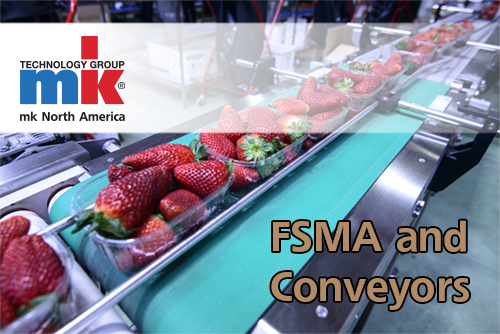The Difference between Sanitary & Stainless Steel Conveyors, and Why It Matters
Posted on

On January 4, 2011 President Barack Obama signed into law the Food Safety Modernization Act (FSMA). The bill was designed to put regulatory pressure on food growers and processors to prevent contamination of the food supply, rather than relying on recalls and other reactive measures to deal with instances of foodborne illness.
For consumers, this means greater confidence in the safety of the U.S. food supply. For manufacturers and processors, the law has meant higher standards of manufacturing best practices, hazard analysis, and preventative controls. One area where these standards come into play is that of food handling and processing and conveyor systems.
With compliance deadlines for these new standards set for September 19, 2016, most food processors should have already upgraded or confirmed the adequacy of their food-grade conveyor systems. But without the proper education, some processors may install conveyor systems that aren’t as “sanitary” as they thought, reducing their chances for compliance when it comes time for an inspection. This is because they may confuse conveyors that are merely made with stainless steel for those which are truly sanitary.
The Difference between Stainless Steel Conveyors and Sanitary Conveyors
In a nutshell, most sanitary conveyor systems are made with stainless steel, but not all steel conveyors are truly sanitary.
Sanitary conveyors use stainless steel construction because if its ability to withstand harsh washdown and frequent cleaning with caustic soaps and other chemicals, a core practice in food processing plants to prevent contamination. But while any stainless steel conveyor will be more washdown-resilient than one made with aluminum or mild steel, there’s more to sanitary conveyors than just stainless steel frames.
Sanitary conveyors are made not just to withstand cleaning, but to avoid contamination altogether. This means eliminating surfaces where food particles, other debris, and bacteria can accumulate. Highly specialized design is therefore necessary, with specific attention paid to the elimination of these harbor points, which many steel conveyors lack. Other specialized features of sanitary conveyors may include the following:
- Use of welding rather than bolted fasteners, which can create crevices that can collect food particles and lead to unhygienic conditions
- Welds should be ground and polished to ensure continuous, non-pitted construction
- Food-grade belting that’s easy to remove and clean
- For some industries, anti-microbial belting may be required or desirable
- Ability to remove or break down parts without the use of specialized tools, making deep cleans easier
- Best practices may include open-frame design or frames with cut-outs to aid in cleaning
Sanitary Steel Conveyors from mk North America
If you’re looking for a sanitary, food-grade conveyor for your processing or packaging application, mk North America’s line of CleanMove sanitary washdown conveyors sets the bar for cleanability, performance, and reliability in line with FSMA standards.
CleanMove conveyors come in two distinct platforms each with a different level of sanitation standards for various uses and applications: The CleanMove Standard is best suited for packaged and processed foods; CleanMove Plus for non-cultured foods and produce. Numerous belting options and frame shapes are available for each of the CleanMove platforms, including cleated belts and z-frames.
To learn more about mk North America’s sanitary conveyor options, including custom systems to meet specific needs, get in touch by calling (860) 769-5500 or by using the form below.
